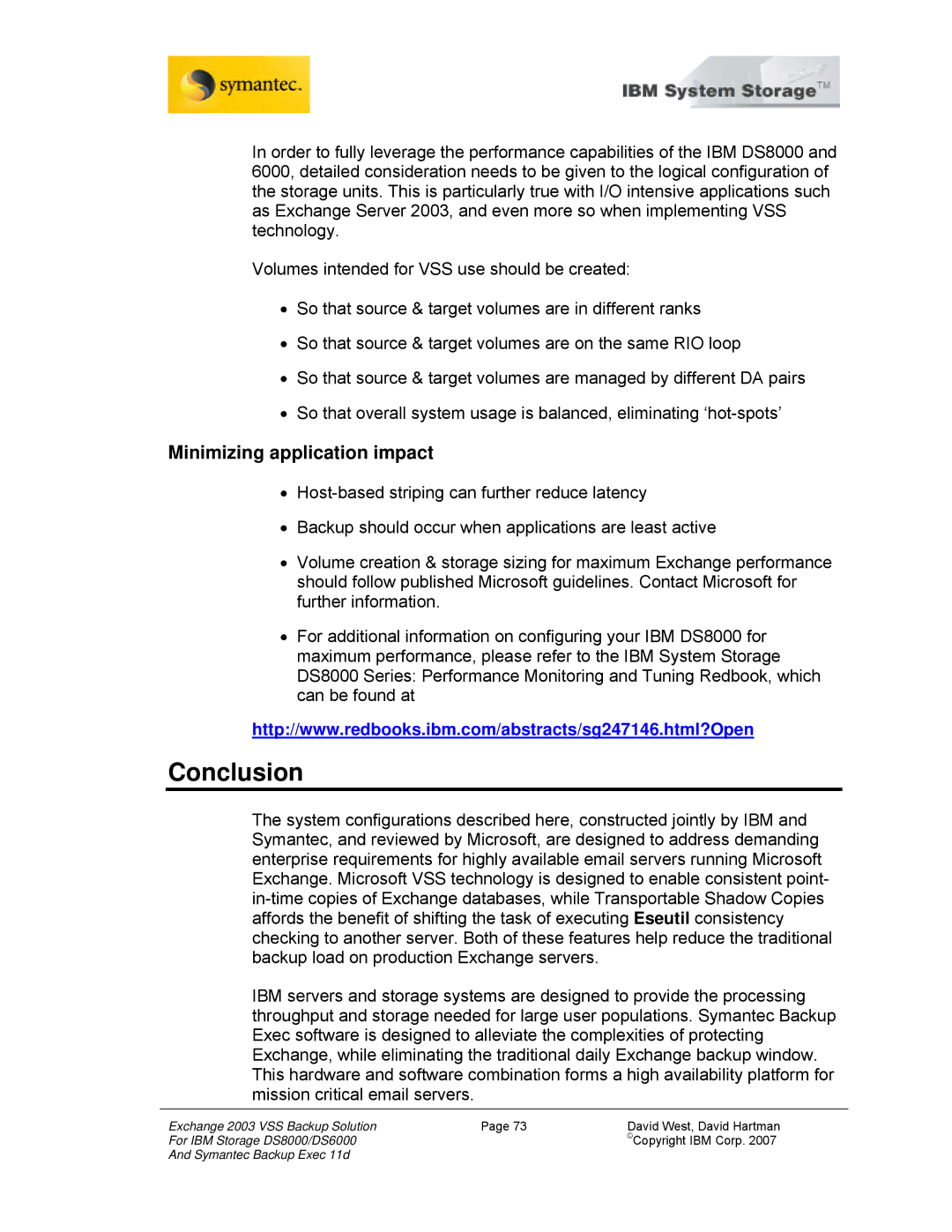
In order to fully leverage the performance capabilities of the IBM DS8000 and 6000, detailed consideration needs to be given to the logical configuration of the storage units. This is particularly true with I/O intensive applications such as Exchange Server 2003, and even more so when implementing VSS technology.
Volumes intended for VSS use should be created:
•So that source & target volumes are in different ranks
•So that source & target volumes are on the same RIO loop
•So that source & target volumes are managed by different DA pairs
•So that overall system usage is balanced, eliminating
Minimizing application impact
•
•Backup should occur when applications are least active
•Volume creation & storage sizing for maximum Exchange performance should follow published Microsoft guidelines. Contact Microsoft for further information.
•For additional information on configuring your IBM DS8000 for maximum performance, please refer to the IBM System Storage DS8000 Series: Performance Monitoring and Tuning Redbook, which can be found at
http://www.redbooks.ibm.com/abstracts/sg247146.html?Open
Conclusion
The system configurations described here, constructed jointly by IBM and Symantec, and reviewed by Microsoft, are designed to address demanding enterprise requirements for highly available email servers running Microsoft Exchange. Microsoft VSS technology is designed to enable consistent point-
IBM servers and storage systems are designed to provide the processing throughput and storage needed for large user populations. Symantec Backup Exec software is designed to alleviate the complexities of protecting Exchange, while eliminating the traditional daily Exchange backup window. This hardware and software combination forms a high availability platform for mission critical email servers.
Exchange 2003 VSS Backup Solution | Page 73 | David West, David Hartman |
For IBM Storage DS8000/DS6000 |
| ©Copyright IBM Corp. 2007 |
And Symantec Backup Exec 11d |
|
|
